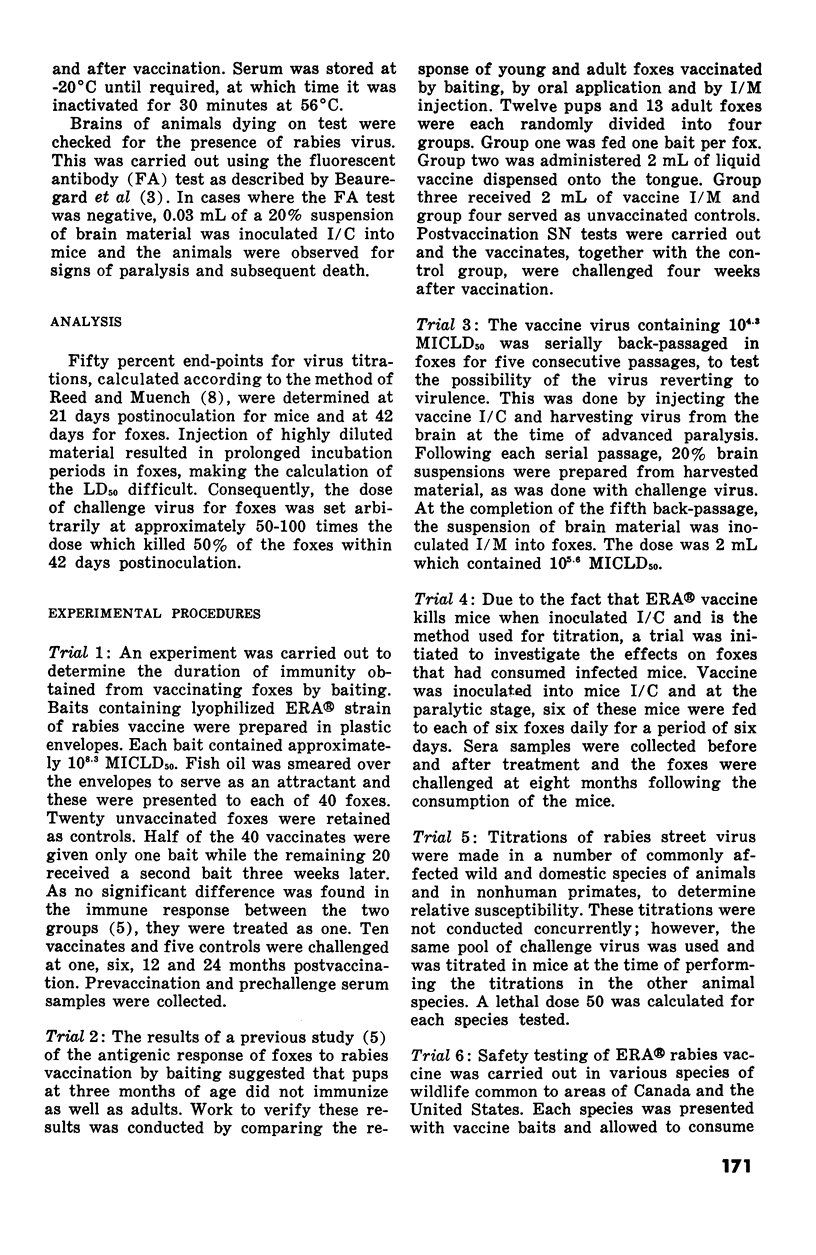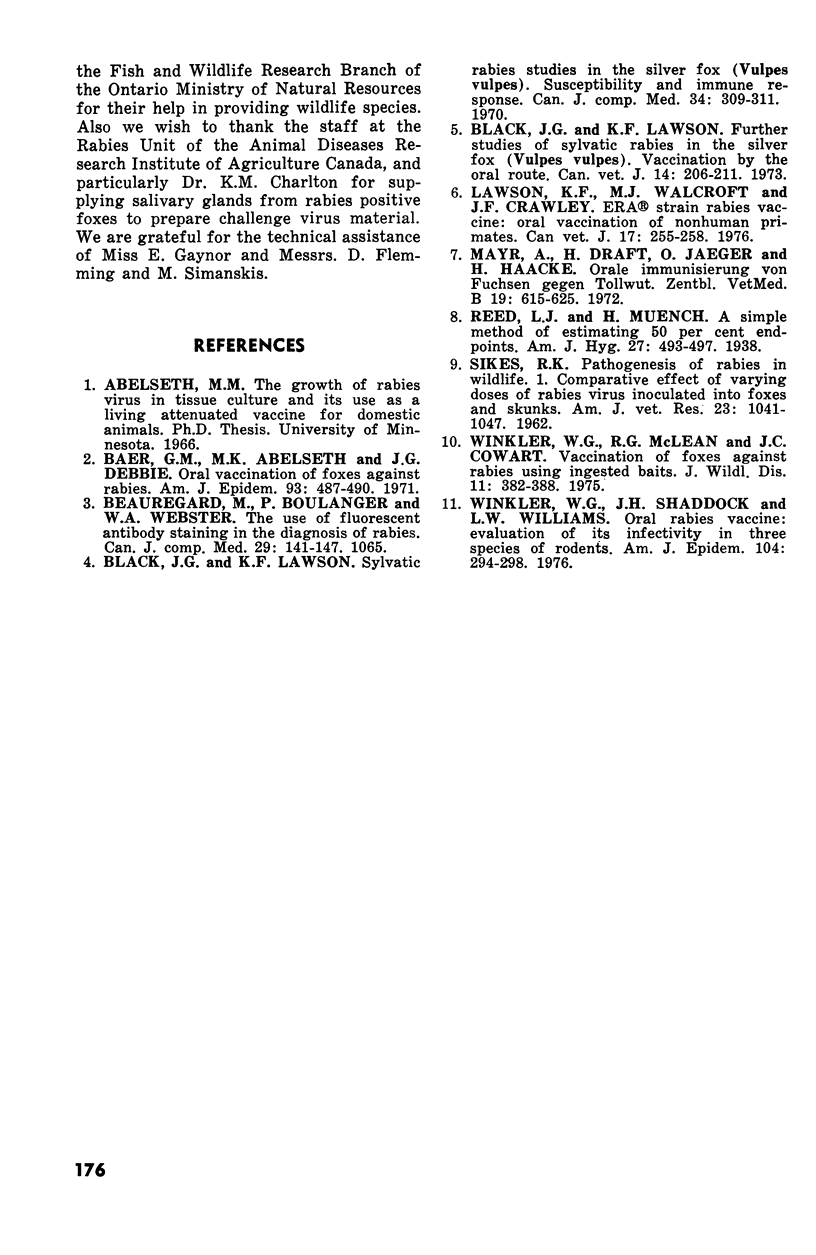Abstract
Foxes given ERA rabies vaccine baits were challenged at one, six, 12 and 24 months later and showed a resistance to challenge in 80%, 78%, 60% and 44% of individuals respectively. All animals showing seroconversion following vaccination, resisted challenge at 24 months, suggesting that successful vaccination by the oral route could confer a relatively long term duration of immunity. The trials showed that fox pups did not immunize as easily as adult foxes using ERA rabies vaccine baits. Back-passage studies and the consumption of ERA injected mice by foxes failed to show any reversion of the vaccine virus to a virulent state. The fox and mouse are shown to be highly susceptible to rabies street virus, while the domestic species tested are consisderably more resistant. Monkeys were found to be intermediate in susceptibility to the virus. Safety tests carried out on various species of wildlife showed only the mouse to be susceptible to infection from ingesting the vaccine in the form of a bait. ERA rabies vaccine was shown to be safe in monkeys even when high titred virus was administered by the oral route.
Full text
PDF







Selected References
These references are in PubMed. This may not be the complete list of references from this article.
- Baer G. M., Abelseth M. K., Debbie J. G. Oral vaccination of foxes against rabies. Am J Epidemiol. 1971 Jun;93(6):487–490. doi: 10.1093/oxfordjournals.aje.a121283. [DOI] [PubMed] [Google Scholar]
- Black J. G., Lawson K. F. Further studies of sylvatic rabies in the fox (Vulpes vulpes). Vaccination by the oral route. Can Vet J. 1973 Sep;14(9):206–211. [PMC free article] [PubMed] [Google Scholar]
- Black J. G., Lawson K. F. Sylvatic rabies studies in the silver fox (Vulpes vulpes). Susceptibility and immune response. Can J Comp Med. 1970 Oct;34(4):309–311. [PMC free article] [PubMed] [Google Scholar]
- Lawson K. F., Walcroft M. J., Crawley J. F. ERA Strain rabies vaccine: oral vaccination of nonhuman primates. Can Vet J. 1976 Oct;17(10):255–258. [PMC free article] [PubMed] [Google Scholar]
- Mayr A., Kraft H., Jaeger O., Haacke H. Orale Immunisierung von Füchsen gegen Tollwut. Zentralbl Veterinarmed B. 1972 Sep;19(8):615–625. [PubMed] [Google Scholar]
- SIKES R. K. Pathogenesis of rabies in wildlife. I. Comparative effect of varying doses of rabies virus inoculated into foxes and skunks. Am J Vet Res. 1962 Sep;23:1041–1047. [PubMed] [Google Scholar]
- Winkler W. G., McLean R. G., Cowart J. C. Vaccination of foxes against rabies using ingested baits. J Wildl Dis. 1975 Jul;11(3):382–388. doi: 10.7589/0090-3558-11.3.382. [DOI] [PubMed] [Google Scholar]
- Winkler W. G., Shaddock J. H., Williams L. W. Oral rabies vaccine: evaluation of its infectivity in three species of rodents. Am J Epidemiol. 1976 Sep;104(3):294–298. doi: 10.1093/oxfordjournals.aje.a112302. [DOI] [PubMed] [Google Scholar]


